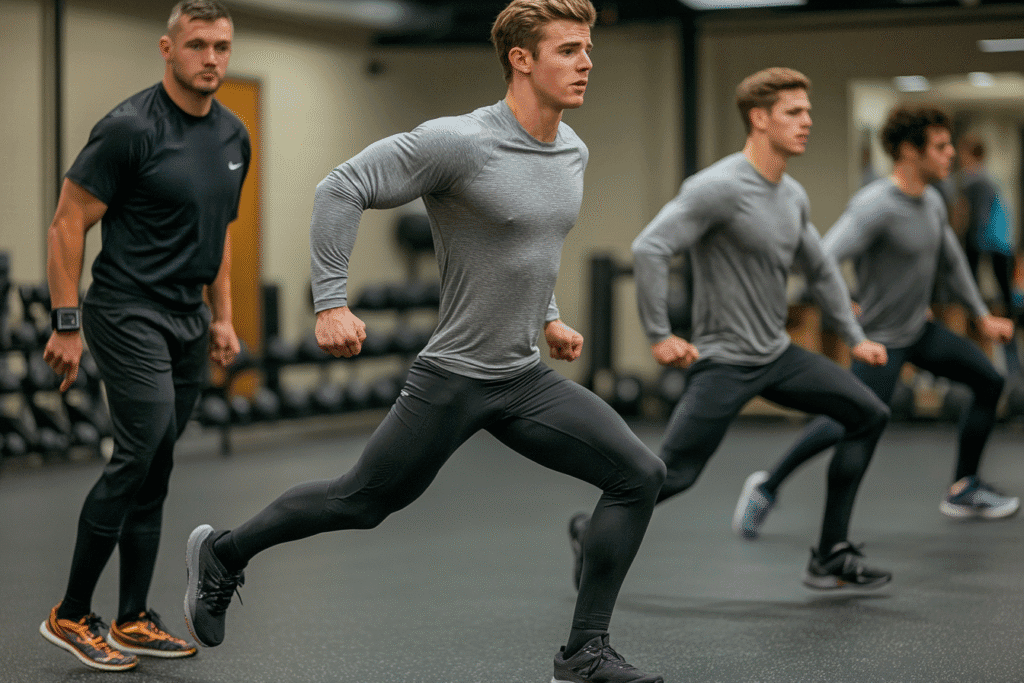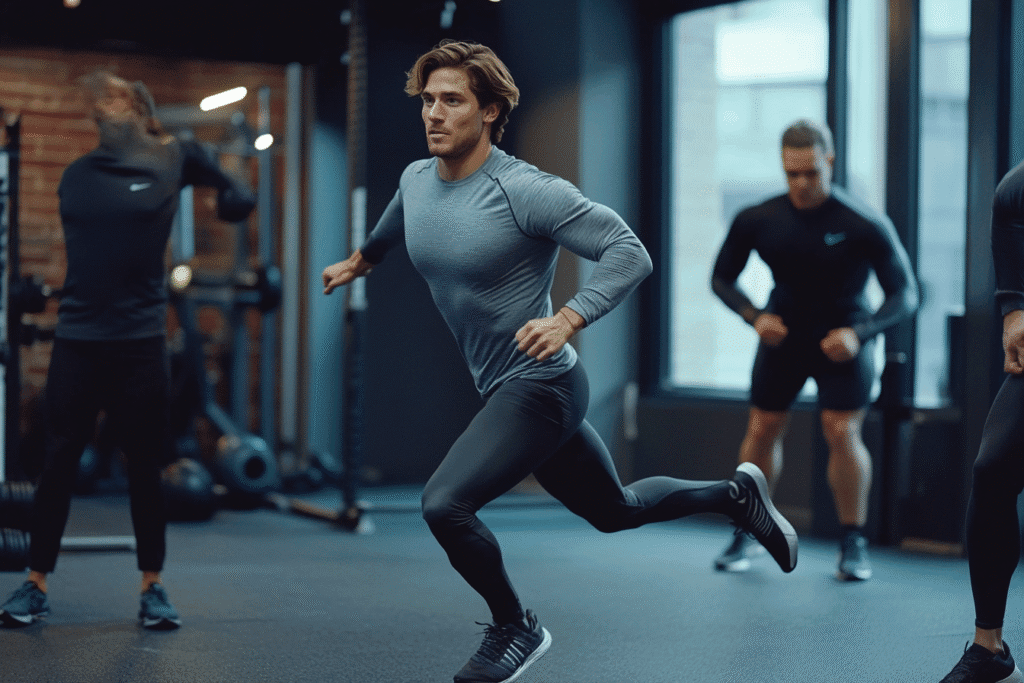
Nylon spandex fabric is everywhere—from high-performance activewear to seamless intimates—but have you ever wondered how it’s actually made? As someone who works closely with textile mills and apparel factories, I’ve seen firsthand how this stretch fabric goes through a complex journey, starting with synthetic fibers and ending up as a finished garment. Whether you’re a sourcing manager, designer, or manufacturer, understanding this process can help you make smarter decisions when developing products or choosing suppliers.
Nylon spandex fabric is made by blending nylon (polyamide) and spandex (elastane) fibers through knitting or weaving, followed by dyeing, finishing, and quality inspection. The process starts with synthetic polymerization, continues through yarn spinning and fabric formation, and ends with garment cutting, sewing, and packaging.
To fully understand the value this fabric brings to modern apparel, we need to break down its lifecycle step by step. From raw material production to final garment assembly, let’s explore how nylon spandex fabric is engineered to meet the demands of today’s fashion and performance wear industries.
What Are the Raw Materials Used in Nylon Spandex Fabric?
Nylon Spandex fabric is a popular blend in activewear, swimwear, and fashion due to its durability, stretch, and comfort. Understanding its raw materials—Nylon (Polyamide) and Spandex (Elastane)—helps appreciate how this high-performance fabric is made.
Nylon (Polyamide) Fibers and Their Origin
Nylon, a synthetic polymer, is derived from petroleum-based chemicals through a process called polymerization.
Source & Chemistry:
Nylon is a polyamide, formed by reacting diamine acids with dicarboxylic acids (e.g., adipic acid and hexamethylenediamine). This creates long-chain molecules that are melted and extruded into fibers.
Key Properties:
High strength & abrasion resistance – Ideal for activewear.
Low moisture absorption – Dries quickly, reducing sweat retention.
Smooth texture – Enhances fabric softness and dyeability.
Production Process (Brief):
Polymerization: Raw chemicals are combined to form nylon chips.
Melt Spinning: Chips are melted and forced through spinnerets to create filaments.
Drawing: Fibers are stretched to align molecules, increasing strength.
Spandex (Elastane) Fibers and Their Production
Spandex (also called Elastane or Lycra®) provides exceptional elasticity, often making up 5-20% of nylon-spandex blends.
Chemical Structure:
Spandex is a polyurethane-polyurea copolymer, consisting of flexible polyether segments (for stretch) and rigid urethane segments (for recovery).
Manufacturing Methods:
Solution Spinning (Wet/Dry):
Dry Spinning (Most Common): A polymer solution is extruded, and solvents evaporate, leaving solid fibers.
Wet Spinning: The solution is coagulated in a chemical bath.
Melt Spinning (Less Common): Used for certain high-performance variants.
Why Small Percentages Deliver High Stretch?
Spandex fibers act like coiled springs, stretching up to 500% of their length.
When blended with nylon, the rigid nylon fibers provide structure, while spandex enables flexibility.
Even 5-10% spandex significantly improves fabric elasticity without sacrificing durability.

How Are Nylon and Spandex Fibers Blended into Fabric?
Nylon Spandex fabric combines the strength of nylon with the stretch of spandex, but the blending process significantly impacts the final fabric’s performance. Depending on the desired end-use—whether activewear, swimwear, or fashion—different knitting, weaving, dyeing, and finishing techniques are applied.
Knitting or Weaving Techniques for Blending
The blending of nylon and spandex primarily occurs during fabric formation, using either knitting (for stretchy fabrics) or weaving (for structured fabrics).
- Knitting (Most Common for Stretch Fabrics)
- Tricot (Warp Knitting): Produces smooth, lightweight, and highly elastic fabrics (e.g., lingerie, sportswear).
- Circular Knitting (Weft Knitting): Creates jersey, rib, or interlock fabrics (common in T-shirts, leggings).
- Spandex Integration: Spandex yarns are either core-spun (nylon wrapped around spandex) or plated (spandex fed alongside nylon).
- Weaving (Less Common but Used for Structured Garments)
- Spandex is typically blended as stretch yarns in the weft (e.g., stretch denim, tailored pants).
- Fabrics have limited stretch compared to knits but offer better shape retention.
Common Fabric Structures and Their Impact
The way nylon and spandex are structured affects elasticity, breathability, and durability.
| Fabric Structure | Characteristics | Common Uses |
|---|---|---|
| Single Jersey | Lightweight, 2-way stretch, prone to curling | T-shirts, leggings |
| Double Knit | More stable, 4-way stretch, less prone to runs | Athletic wear, swimwear |
| Mesh | Open structure, high breathability | Sportswear, linings |
| Jacquard | Patterned texture, controlled stretch | Fashion apparel |
| High-Gloss (Satin Weave) | Smooth, reflective surface | Swimwear, performance wear |
Key Factors Influenced by Structure:
✔ Stretch Direction – 2-way (horizontal/vertical) vs. 4-way (omnidirectional).
✔ Thickness & Durability – Denser knits (double knit) resist abrasion better.
✔ Breathability – Mesh and open-knit structures enhance airflow.
Dyeing, Finishing, and Functional Treatments
After knitting/weaving, nylon-spandex fabrics undergo dyeing and finishing to enhance aesthetics and performance.
- Dyeing Process
- Acid Dyes (For Nylon): Provide vibrant colors with good wash-fastness.
- Disperse Dyes (For Spandex): Require high-temperature dyeing for even penetration.
- Dye Bath Setup: Must balance pH and temperature to prevent spandex degradation.
- Functional Finishes
- Moisture-Wicking – Hydrophilic coatings pull sweat away from skin.
- UV Protection – Chemical blockers (e.g., TiO₂) shield against sun damage.
- Antimicrobial – Silver-ion treatments prevent odor-causing bacteria.
- Chlorine Resistance – Critical for swimwear (prevents yellowing/fiber damage).
- Softening & Anti-Pilling – Silicone-based finishes improve hand feel and durability.

How Does Nylon Spandex Fabric Become a Finished Garment?
The transformation of nylon-spandex fabric into a finished garment involves precision cutting, specialized sewing techniques, and careful handling to maintain its stretch and durability. From quality checks to final packaging, each step ensures the garment meets performance and aesthetic standards.
Fabric Inspection and Quality Control
Before cutting, the fabric undergoes strict quality control to detect defects and verify specifications.
Key Tests Performed:
✔ GSM (Grams per Square Meter) – Measures fabric weight (e.g., lightweight for activewear vs. heavy for outerwear).
✔ Stretch & Recovery Test – Confirms elasticity in warp/weft directions (e.g., 2-way vs. 4-way stretch).
✔ Shrinkage Test – Pre-wash evaluation to prevent post-production size changes.
✔ Colorfastness Test – Checks resistance to fading (washing, rubbing, light exposure).
Industry Inspection Standards:
- 4-Point System (AATCC/ASTM) – Deducts points for defects (e.g., holes, stains, uneven dyeing).
- Roll-by-Roll Inspection – Fabric is checked on a lightbox or automated inspection machine.
- B2B Compliance – Suppliers often follow buyer-specific standards (e.g., Nike, Lululemon QC protocols).
Cutting and Sewing Considerations for Stretch Fabric
Stretch fabrics require special handling during cutting and sewing to prevent distortion.
1. Cutting Methods:
- Automated Cutting (Preferred) – Laser or computerized cutting ensures precision without fabric slippage.
- Manual Cutting (For Small Batches) – Requires weights/pins to stabilize fabric.
2. Sewing Techniques:
- Needle Type – Ballpoint needles (rounded tip) prevent snagging spandex fibers.
- Stitch Type –
- 4-Thread Overlock – For seam strength and edge finishing.
- Coverstitch – Used for hemming (e.g., leggings, sportswear).
- Thread & Tension – Polyester thread (flexible) with adjusted tension to avoid puckering.
- Stabilizers – Temporary fusible tapes prevent stretching during sewing.
Final Touches: Labeling, Packaging, and Logistics
Proper finishing ensures garments retail shape and quality during shipping and storage.
1. Labeling Requirements:
- Fabric Content Tags – Must list nylon/spandex % (e.g., “85% Nylon, 15% Spandex”).
- Care Instructions – Avoid high heat (spandex degrades at 40°C+).
- Sustainability Certifications – OEKO-TEX, Recycled Claim Standard (if applicable).
2. Packaging Solutions for Stretch Garments:
- Fold & Interleave – Tissue paper between folds prevents creasing.
- Hanging vs. Flat Pack – Delicate items (swimsuits) are hung to avoid stretch deformation.
- Vacuum Sealing (For Export) – Reduces bulk but requires quick unpacking to restore shape.
3. Logistics Considerations:
- Moisture-Proof Bags – Prevent mildew during sea freight.
- Anti-Static Packaging – For synthetic fabrics prone to static cling.

Conclusion
Nylon Spandex fabric is a versatile, high-performance material widely used in activewear, swimwear, and fashion due to its durability, elasticity, and comfort. From raw materials to the final product, each stage of production—fiber blending, fabric construction, dyeing, cutting, sewing, and packaging—requires specialized techniques to ensure quality and functionality.
